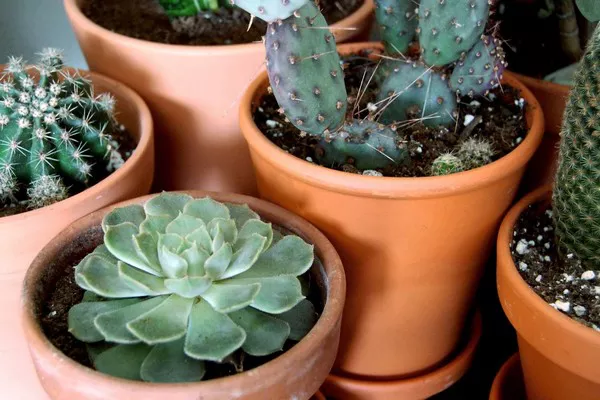Overwatering is a common mistake made by succulent enthusiasts, as these resilient plants are adapted to thrive in arid conditions. If you find yourself with an overwatered succulent, don’t despair. With prompt action and the right care, it is possible to revive and restore your succulent’s health. In this comprehensive guide, we will outline the steps to take when dealing with an overwatered succulent, helping you save your cherished plant and ensure its continued growth and beauty.
1. Recognizing Overwatering Signs
Before diving into the remedial measures, it’s crucial to identify the signs of an overwatered succulent. Look for the following indicators:
Yellowing or Translucent Leaves: Overwatered succulents often exhibit yellowing or translucent leaves, indicating excessive water retention.
Soft and Mushy Texture: Leaves and stems may become soft, mushy, or appear swollen when overwatered due to cell damage.
Root Rot: Overwatering can lead to root rot, characterized by a foul smell, black or brown roots, and mushy texture.
Lack of New Growth: Overwatered succulents may stop producing new growth or display stunted growth patterns.
2. Ceasing Watering and Assessing the Damage
The first step in remedying an overwatered succulent is to cease watering immediately. Allow the soil to dry out completely to prevent further water retention and potential root rot. Once the soil is dry, carefully remove the succulent from its pot and assess the extent of damage.
Root Inspection: Gently remove the plant from the soil and examine the roots. Healthy roots should be firm, white, and well-established. Trim off any black or mushy roots using clean and sterilized gardening shears.
Leaf Evaluation: Assess the condition of the leaves. If they appear healthy, with only minimal damage, you can proceed with the revival process. However, if the leaves are severely damaged or rotting, it may be best to propagate the plant using healthy cuttings or leaves.
3. Aiding Recovery through Proper Soil and Potting
Choosing the right soil and potting conditions are crucial for aiding your overwatered succulent’s recovery.
Well-Draining Soil: Use a specialized cactus or succulent potting mix, or create your own by combining regular potting soil with materials like perlite, pumice, or coarse sand. These additions improve soil drainage and prevent waterlogging.
Appropriate Pot Size: Opt for a pot with drainage holes to ensure excess water can escape. Select a pot size that allows for adequate root growth while avoiding excessive soil moisture retention.
4. Repotting with Care
Repotting an overwatered succulent is an essential step in promoting its recovery. Follow these guidelines when repotting:
Remove Excess Soil: Gently remove the old soil, taking care not to damage the fragile roots. Shake off excess soil or rinse it off carefully.
Pruning Damaged Roots: Trim off any remaining damaged or rotting roots using sterilized shears. Ensure each cut is clean and smooth.
Replanting: Place the succulent in the new pot, ensuring it sits at a similar depth as before. Backfill the pot with the well-draining soil mixture, gently pressing it around the roots to provide stability.
5. Adjusting Watering and Drainage Practices
Proper watering and drainage practices are vital for the recovery and long-term health of your succulent.
Watering Frequency: After repotting, wait until the soil is completely dry before watering your succulent. It’s crucial to avoid overwatering, as succulents prefer infrequent but deep watering.
Watering Technique: When watering, apply water directly to the soil, avoiding contact with the leaves. Allow water to fully saturate the soil, ensuring it drains out through the pot’s drainage holes. Discard any excess water from the saucer or tray.
Monitoring Moisture Levels: Use a moisture meter or your finger to assess soil moisture levels before watering. The soil should be dry at least an inch deep before watering again.
6. Providing Optimal Light and Temperature
Proper light and temperature conditions are essential for the recovery and growth of your overwatered succulent.
Bright Indirect Light: Place your succulent in a location that receives bright, indirect sunlight. Avoid direct, intense sunlight, as this can cause sunburn or further stress to the plant.
Moderate Temperature: Succulents generally thrive in temperatures ranging from 60°F to 80°F (15°C to 27°C). Avoid exposing your succulent to extreme temperature fluctuations.
7. Exercise Patience and Observation
The recovery process for an overwatered succulent requires patience and careful observation. Be attentive to the plant’s progress and make adjustments as needed:
Avoid Overcompensating: Refrain from overwatering or overfertilizing in an attempt to speed up recovery. This can further stress the plant and impede its healing process.
Monitor Growth and Health: Observe the plant for signs of improvement, such as new growth or healthier leaves. It may take weeks or even months for your succulent to fully recover.
Make Adjustments: If your succulent continues to show signs of decline or fails to recover, reassess the care conditions, including light exposure, watering frequency, and soil drainage.
Conclusion
Rescuing an overwatered succulent requires swift action, patience, and providing the ideal conditions for recovery. By ceasing watering, assessing the damage, repotting carefully, adjusting watering practices, and ensuring optimal light and temperature, you can revive your succulent and restore its health. Remember to exercise patience and monitor the plant’s progress, making adjustments as needed. With proper care, your overwatered succulent will have a renewed lease on life, flourishing once again and bringing beauty to your space.


